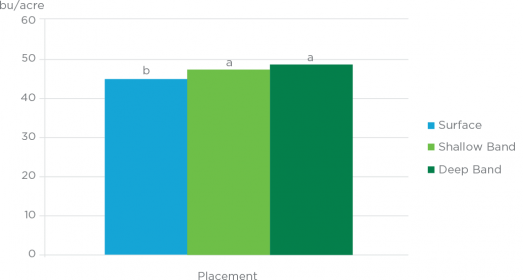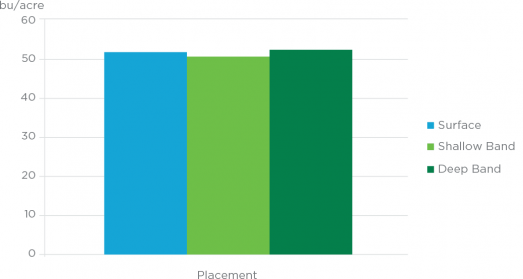Banding N shows clear yield advantage with lower N rates
Key result: In this east-central Manitoba study comparing surface, shallow-band and deep band nitrogen applications, any yield effect from nitrogen losses were minimal when nitrogen was applied at 100 per cent of the recommended rate. Losses were still happening, but the N rate compensated. At 70 per cent of recommended rate, the yield-damaging effect of N loss from surface applications shows up much more clearly.
Project title, Principal investigator: “Canola Response and Minimizing Nitrogen Losses in Two-Pass Seeding-Fertilization Systems with Varying Placement Methods in Manitoba,” Mario Tenuta, University of Manitoba
Funding: Manitoba Canola Growers, Koch Fertilizers
With increasing pressure to complete field operations faster and the trend to using fertilizer custom applicators, a segment of growers in Western Canada are transitioning to surface applications of granular urea. This represents a departure from the recommended practice of deep banding.
To re-test this practice using modern hybrids and tools, this three-year study compared canola yield results for surface application, shallow banding (0.5” to 1”) and deep banding (1.5” to 4”) of nitrogen at 100 per cent and 70 per cent of recommended rates. For year-three of the study, Tenuta and his team also added fall broadcast application treatments.
Surface applications of fertilizer increase the risk that nitrogen will be lost through NH3 volatilization. Volatilization occurs when urea hydrolysis elevates pH levels and increases the concentration of gaseous NH3 around granules. When fertilizer granules are deep banded, gaseous NH3 formed around urea granules can be interconverted to ammonium (NH4+), a non-volatile ion which subsequently absorbs to negatively charged soil particles. This does not happen with surface applications. Gaseous NH3 is lost with surface applications.
That is why deep banding is considered the superior technique. But deep banding does require additional horsepower, can slow field operations at seeding time, and may also have undesirable effects on seedbed quality and moisture content.
The study was designed to compare shallow banding and surface broadcasting to deep banding for losses and yield. Trials also tested the loss-reducing benefits of SuperU and Agrotain, which contain active ingredients that inhibit the enzymatic or microbial processes that contribute to nitrogen loss from soils.
Results
As expected, deep banding did reduce N loss when compared to shallow banding and surface application. These losses, though, tended to be higher in lightest soil used in the study. Trials were done at six sites in east-central Manitoba, from the heavy Red River Valley clay to Carman clay loam.
What is noteworthy is that when nitrogen was applied at 100 per cent of recommended rates, these losses had little consequence on yield (See Figure 2.). This is not surprising as N rates were at provincial guideline recommendations based on the soil test. At these rates, N would be above or near the top end of the N response curve for yield.
However, for the 70-per-cent N rate, banding increased yield compared to surface application (See Figure 1.). There was no statistical difference between banding depths, though deep banding had numerically one bu./ac. more yield than shallow banding. There was no effect of N source (urea, SuperU or Agrotain treated) on yield at the 70-per-cent rate. For the 100-per-cent rate, the effect of banding on yield for N treatments was not evident.
For surface applications, yield was much higher for spring versus fall application. SuperU or Agrotain broadcast in the fall provided no benefit. Surface applications in the fall are not recommended, as many previous studies have concluded.


Deep banding still the best
Deep banding in the spring or late fall is still the best method to increase nitrogen use efficiency, reduce losses (and therefore greenhouse gas emissions) and, for rates below the soil test recommendations, to increase yields. For growers who have implemented broadcast applications for logistical purposes, these are best done in the spring to reduce losses. Consider use of a urease-inhibitor product with spring broadcast applications.
This study was limited to east-central Manitoba. Trials across other soil types and growing regions across the Prairies would provide valuable yield insight for canola farmers, especially for those using rates below their soil-test recommendations.





